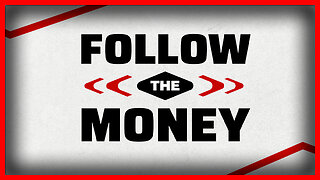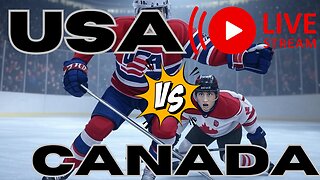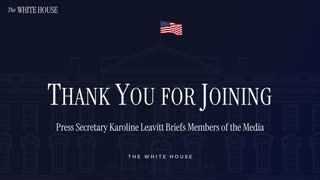Premium Only Content

Small Town Pink Houses Jack & Diane John Mellencamp
Small Town Album: Scarecrow (1985)
Pink Houses Album: Uh-Huh (1983)
Jack & Diane Album: American Fool (1982)
by John Mellencamp
Mellencamp wrote Small Town about his experiences growing up in the small town of Seymour, Indiana. Many entertainers from rural America settle in big cities where the action is. Mellencamp tried that, moving to New York City after he got a record deal, but it didn't take: he felt overwhelmed and creatively bereft. He moved back to Indiana and stayed there the rest of his life, setting up his own recording studio, Belmont Mall, near the tiny town of Nashville, Indiana, so he wouldn't have to go into a city to work.
Many songs have been written about looking to escape the confines of small town America, but Mellencamp celebrates it in his music and life, most vividly on this song.
The media portrayed Mellencamp as the champion of small-town America when Small Town was released. He downplayed his title as "voice of the heartland," saying he was simply writing about his life, not trying to make a statement. But to those living in small towns across America, his music was inspiriting. David Masciotra, author of Mellencamp: American Troubadour, grew up in the small town of Lansing, Illinois, and was one of many who felt validated by this song. "'Small Town' is an immensely important song in the recent history of American music because of exactly what he said: It celebrates the life that one can live in a town that is off the cultural map," Masciotra said on the Songfacts Podcast. "It affirms the dignity and integrity and value of the people who reside within those towns. When he wrote it, it wasn't his intention to become the 'Voice of the Heartland' or the keeper of the small town, but with all due respect to Mr. Mellencamp, I don't think that he gets to decide. Bob Dylan said that he didn't want to become the voice of his generation in the '60s. Well, once art exists outside the wider culture, it really becomes out of the control of the creator and it becomes something that embeds itself in the lives of the listeners. And for me, it affirmed the value and the dignity and the relevance of where I lived."
The music Mellencamp listened to growing up in the '60s was a huge influence on his work, and he often put bits of classics songs from that era in his tracks. On the bridge of "Small Town," you can hear the riff from The Supremes song "Back in My Arms Again."
Mellencamp wrote Small Town after having a number of conversations with folks from New York who seemed to think he - and everyone else from the middle of the country - was a rube. "I wanted to write a song that said, 'you don't have to live in New York or Los Angeles to live a full life,'" he told Rolling Stone in 2013. "I was never one of those guys that grew up and thought, 'I need to get out of here.' It never dawned on me. I just valued having a family and staying close to friends."
Why was "Small Town" a hit? Mellencamp attributes it to a simple reason: it makes people feel good. He thinks many of his songs don't do well commercially because they make people confront problems, like the plight of American farmers.
Married an LA doll and brought her to this small town
Now she's small town just like me
Mellencamp married his second wife, Vicky Granucci, in 1981, which is the reference here. They had two daughters, Teddi Jo and Justice, before divorcing in the late '80s. Her father is the Los Angeles stuntman Phil Adams.
After Mellencamp married the model Elaine Irwin, who is 17 years younger, in 1992, he would sometimes add the line, "My wife was 13 years old growing up in a small town when I wrote this song." He and Irwin split up in 2010.
Mellencamp often writes about the American experience. His songs are sometimes misinterpreted as patriotic anthems, when a deeper listen reveals lyrics that deal with the challenges of living in America as well as the triumphs. Mellencamp has expressed his love for his country, but has also criticized the US government for going to war in Iraq, developing a dependency on foreign oil, and not doing more to support the working class.
"It's really an anti-American song," Mellencamp told Rolling Stone about "Pink Houses." "The American dream had pretty much proven itself as not working anymore. It was another way for me to sneak something in."
Inspiration for Pink Houses came when Mellencamp was driving on Interstate 65 in Indianapolis. As described in the first verse, he saw a black man sitting in a lawn chair just watching the road. The image stuck with Mellencamp, who wasn't sure if the man should be pitied because he was desolate, or admired because he was happy.
MTV ran a contest based on this song where they gave away a pink house in Indiana. They got a great deal on the place - John Sykes at the network remembers paying $20,000 for it - but unfortunately, the house was across from a toxic waste dump. When Rolling Stone ran an article pointing this out, Sykes flew to Indiana and bought another house, which is the one they gave away (after painting it pink). The ordeal provided one of the many strange-but-true memories of the early MTV years (and not the only one involving a contest - when they did a promotion with Van Halen making a viewer a "roadie for a day," the guy who won almost died from the alcohol, drugs and assorted excess). According to Sykes, the house near the waste dump stayed on the books at MTV until 1992 because they couldn't get rid of it.
Uh-Huh was the first album where Mellencamp used his real name. His manager named him "Johnny Cougar" when he started out, a name he used on his first two albums. He then became "John Cougar" until his seventh album, Uh-Huh, when he used John Cougar Mellencamp. In 1990, he recorded as John Mellencamp.
Changing his name was out of character, as he was notoriously combative with his record company and refused to participate in conventions like listening parties. But he knew that the only way he could ever call his own shots was by making hits, and the name change seemed like a good call, even though it didn't suit him. When his plan worked, earning his autonomy, he started the process of changing to his real name.
Mellencamp's previous hits, notably "Hurts So Good" and "Jack & Diane," took him a long time to write. "Pink Houses" was different, and marked a creative breakthrough.
"I started writing every day and painting and drawing, and I found myself open to suggestion," he said in his Plain Spoken DVD. "I wrote a song called 'Pink Houses' that came very quickly. I wasn't thinking about it - I saw something a couple of days before, and I just more-less reported on it, and it came out to be 'Pink Houses.' True art is always a surprise. It's not constructed. If it doesn't surprise the person that's writing it, it's not going to surprise the person that's listening."
Mellencamp performed an 8-minute version of Pink Houses with Kid Rock at the 2001 "Concert For New York," a benefit for victims of the World Trade Center attacks.
A song about a high school couple falling in love, Mellencamp wrote "Jack & Diane" as a tribute to life in the rural working class. The inspiration was his hometown of Seymour, Indiana, which had a population of about 13,000 when it was released. The song has a very nostalgic feel, but paints a picture of a couple whose best years will soon be behind them. In a 1982 interview with The LA Herald Examiner, Mellencamp explained: "Most people don't ever reach their goals, but that's cool, too. Failure's a part of what you're all about anyway. Coming to terms with failed expectations is what counts. I try to write about the most insignificant things, really. I mean, someone who picks up a copy of Newsweek, then sits down and writes a song about the troubles in South America - who cares? What's that song telling us that we don't already know? Write about something that matters to people, man."
Some of Mellencamp's high school photos and home movies were used to make the video, which was pretty much an afterthought. His record company hired Jon Roseman Productions to make videos for the songs "Hurts So Good" and "Hand To Hold On To."
Paul Flattery, who worked for that production company, explained in the book I Want My MTV that Mellencamp made a special request after those videos were completed: "He said, 'Look, there's a song on the album the label doesn't believe in. But I do. Can you do me a favor and save one roll of film, shoot me singing the song, I'll give you some old photos and stuff and then you cobble it together for me?
The song was 'Jack & Diane.' So we stole some editing time in LA. We projected slides on the edit room wall, and we had the tape-op wear white gloves to do the clapping. We didn't charge John a cent."
Mellencamp spent a long time crafting Jack and Diane in an effort to make it a hit. This was part of his plan to become so successful he could ignore critics and tell his record company to stick it. But first, he had to make some concessions, like changing his name.
His manager named him "Johnny Cougar," and he went along with it, scoring an Australian hit with "I Need A Lover" in 1978. A year later, he altered his moniker to "John Cougar," which is how he was billed on the American Fool album. The first single, "Hurts So Good" became a huge hit and got him on MTV, and when "Jack & Diane" followed, it accomplished his mission of autonomy through hits.
Following Phil Collins' template from the 1981 hit "In The Air Tonight," Mellencamp ordered a drum break in the middle of Jack and Diane. His drummer, Kenny Aronoff, had to come up with it on the spot, proving his mettle when he did so. In a Songfacts interview with Aronoff, he told the story:
"I walk into the studio and the co-producer has a Linn LM-1 drum machine. I'd never seen a drum machine before. I'm being told that they're using this on the song 'Jack & Diane' that we were having trouble coming up with an arrangement for. I'm devastated that I'm going to be replaced by a drum machine. I grab the drum machine, I get the manual, and I program the drum part. I'm in the lounge, really bummed out and wondering, 'What's the future of the drummer?' This is 1981. I'm wondering, 'Will that machine replace us?'
Two hours later, I'm summoned into the control room, where John tells me, 'I need you to come up with a drum solo or something after the second chorus.' At that moment, I was absolutely terrified and excited. Excited because I'm now going to be playing on the record. Terrified because I knew that I had to save the song in order to save my career. Because if I didn't come up with it, they'd replace me. Two people had already been fired in the band and when I joined two years prior, I was fired from playing on the record. So, this was a scary moment for me.
The long and short of it is, I come up with this part on the spot and it becomes a #1 hit – John's biggest hit ever. That and 'In The Air Tonight' by Phil Collins are probably the two most air-drummed solos on pop radio, ever [even Mellencamp air drums it in the video]. It's not technically hard, but I was forced to create that on the spot."
In Campbell Devine's authorized biography of Ian Hunter and Mott The Hoople it is revealed that Jack and Diane was heavily influenced by Mick Ronson. The multi-talented Ronson (1946-1993), who was best known as a guitarist, recorded as a solo artist as well as playing lead guitar for both David Bowie and Ian Hunter (as Hunter-Ronson). In the book, Mellencamp says he'd thrown the song on the junk heap, adding: "I owe Mick Ronson the song... Mick was very instrumental in helping me arrange that."
Up until the big drum break, a drum machine was used on this song, but drummer Kenny Aronoff gave it a human touch not just for the break, but also the section that immediately follows. "When I got into the groove after the drum solo, the drummer that influenced me to hit the floor tom on beat four was Steve Gadd from a recording he did on a Chick Corea album, and the song was called 'Lenore,'" Aronoff told Songfacts. "Steve Gadd would always hit the beat on beat four. I thought that was cool, so even though I don't sound anything like Steve Gadd and nothing like he was playing on the Chick Corea record, that track influenced me to hit the floor tom, which made my hi-hats open."
Jack and Diane helped Mellencamp forge his identity, which was a struggle for him. "The image that was given to me by the record company was so far off base of who I was and what I wanted to do," he said in his Plain Spoken DVD. "I had no idea what I wanted to do, but I knew what I didn't want to do. I did not want to be Johnny Cougar, I did not want to sing love songs, I did not want to be the next Neil Diamond, which is what they wanted."
"Jack & Diane," with specific references to rural America, established him as a heartland rocker, which suited him. He also got some great advice. "I had to figure out what my image was, and I had a girl say to me, 'John, just be a pair of blue jeans. That's what you are.' And the great thing about blue jeans is, you can dress them up, or you can dress them down."
The only musical couple song that can rival this one for popularity is the standard "Frankie And Johnny. Most other hit songs of this nature were cribbed from literature or film, like "Romeo And Juliet" and Bonnie And Clyde. In 1978, Raydio had a hit with "Jack And Jill."
Weird Al Yankovic planned to parody this song on his 1983 debut album as "Chuck And Diane," making fun of the royal couple Prince Charles and Lady Diana. Yankovic couldn't get Mellencamp's permission to do the parody (which he asks as a courtesy, as anyone can parody a song as long as proper royalties are paid), so he used the lyrical content for an original song called "Buckingham Blues" instead. Yankovic did parody the song on the 2003 Simpsons episode "Three Gays Of The Condo," where he sang it in animated form as "Homer And Marge."
Jack and Diane is the only #1 Hot 100 hit in Mellencamp's career, and based on streams and downloads, his most popular song.
The Sun October 10, 2008 asked Mellencamp if it bothered him being best known for Jack and Diane. He replied: "That song is 30 or so years old and it gets played more today in the United States than it did when it came out. As much as I am a little weary of those two, I don't know any other two people in rock and roll who are more popular than Jack and Diane. Some people probably think there's a place in hell for me because of those two people! But it gave me the keys to do what I want. I'm 57 today. I've lived the way I wanted to live, sometimes recklessly and stupidly, but still been able to do that. I've been able to live on my whims, that's what Jack and Diane gave me, so I can't hate them too much."
-
 25:56
25:56
Psychological operations
9 days agoI Don't Know Road To Nowhere You Can't Kill Rock And Roll Over The Mountain Suicide Solution
714 -
 56:44
56:44
VSiNLive
2 hours ago $2.03 earnedFollow the Money with Mitch Moss & Pauly Howard | Hour 1
34K1 -
 1:08:41
1:08:41
John Crump Live
6 hours agoUSA v. Canada! Bigger Than Just A Game
7.56K2 -

Revenge of the Cis
3 hours agoEpisode 1450: Wet Work
24.1K1 -
 3:36:29
3:36:29
vivafrei
9 hours agoKash Patel Confirmation Hearing LIVE! Jan. 6'er Kicked Out of CPAC? DOGE Wins in Court? & MORE!
241K242 -
 5:08:38
5:08:38
Barry Cunningham
9 hours agoTRUMP DAILY BRIEFING: KASH PATEL VOTE | WHITE HOUSE PRESS CONFERENCE | DOGE UPDATE
44K23 -
 1:57:54
1:57:54
The Quartering
7 hours agoRand Paul Praises Trump, Amazon Takes Control of Bond, and Delta Gives Passengers $30,000
90.9K33 -
 1:01:59
1:01:59
The White House
5 hours agoPress Secretary Karoline Leavitt Briefs Members of the Media, Feb. 20, 2025
100K119 -
 59:58
59:58
Russell Brand
7 hours agoLive from Mar-a-Lago: The Globalist Empire’s Last Stand – SF541
156K181 -
 35:23
35:23
CryptoWendyO
5 hours ago $2.31 earnedCrypto Chaos Unleashed: Trump Making USA The Bitcoin Capital Of The World
39.4K4